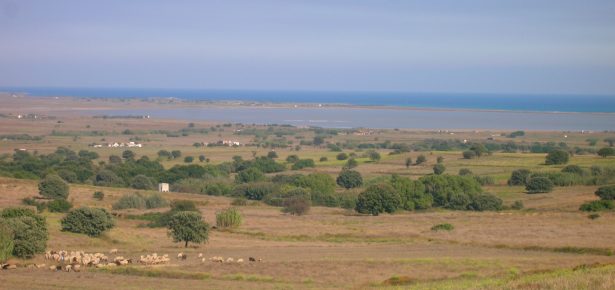
This book is about survival, resilience, and community building; it tells the story of rural communities on the islands of Lemnos and Thasos in the Northern Aegean and narrates their experiences in dealing with political and economic crises, enemy threats, and the Black Death in the Late Byzantine period (13th -15th century).
There are many protagonists in this book: non-elite women in charge of their house and fortune, pirates turned imperial officials and castle lords, Byzantine soldiers, craftspeople who both served local communities and saw their products being traded throughout the Eastern Mediterranean and powerful monks who were responsible for the salvation of the soul as well as for the management of large monastic fortunes on the islands. These people’s stories point to economically and socially diverse rural communities who actively participated in the political and economic realities of their times. As such, they invite us to reexamine how we have come to understand ordinary people in the past and their ability not only to react to change but also to prepare for it and initiate it.
So how did they do it? How did these island rural communities manage to survive severe political economic and demographic challenges, make their voices heard and, in some instances, even improve their life circumstances in the aftermath of crisis? Archaeological and textual evidence on settlements, forts, churches, landscapes, daily activities, and rituals reveal how these communities prepared for both gradual and sudden changes. In their toolkit, we might recognize strategies that resonate with modern experiences such as maintaining a diverse economic portfolio, or in a Late Byzantine context, engaging in different economic activities, including cultivating different crops, owning shares in mills and fishing boats, and investing in livestock when there was no farming land available.
Adjustments to one’s economic activities corresponded to changes in social relations including expanding networks of trust, friendship and cooperation beyond one’s family and village. On a personal/family level such social changes informed choices about marriage, mobility, and inheritance patterns while on an island level they translated to a perpetual search for economic and military allies within and beyond Byzantium. Central to these communities’ resilience were collective identity and a sense of belonging that offered hope, cohesion, and a sense of a common destiny; they permeated all aspects of life from a shared understanding of the landscape and participation in church building and religious activities to a collective responsibility to defend the islands by building and manning their fortifications.
These Late Byzantine rural communities’ diverse responses to political, economic, and demographic challenges exemplify how crisis can coexist with change and opportunity. Their constant experimentation with different solutions and adjustments to their socioeconomic strategies highlight their agency and ability to translate their needs and desires into action. In terms of crisis management, these Late Byzantine experiences suggest that economic measures alone are not sufficient to overcome a crisis; rather social practices, including social interaction, collective action and mutual support are key ingredients in resilience building.
Latest Comments
Have your say!